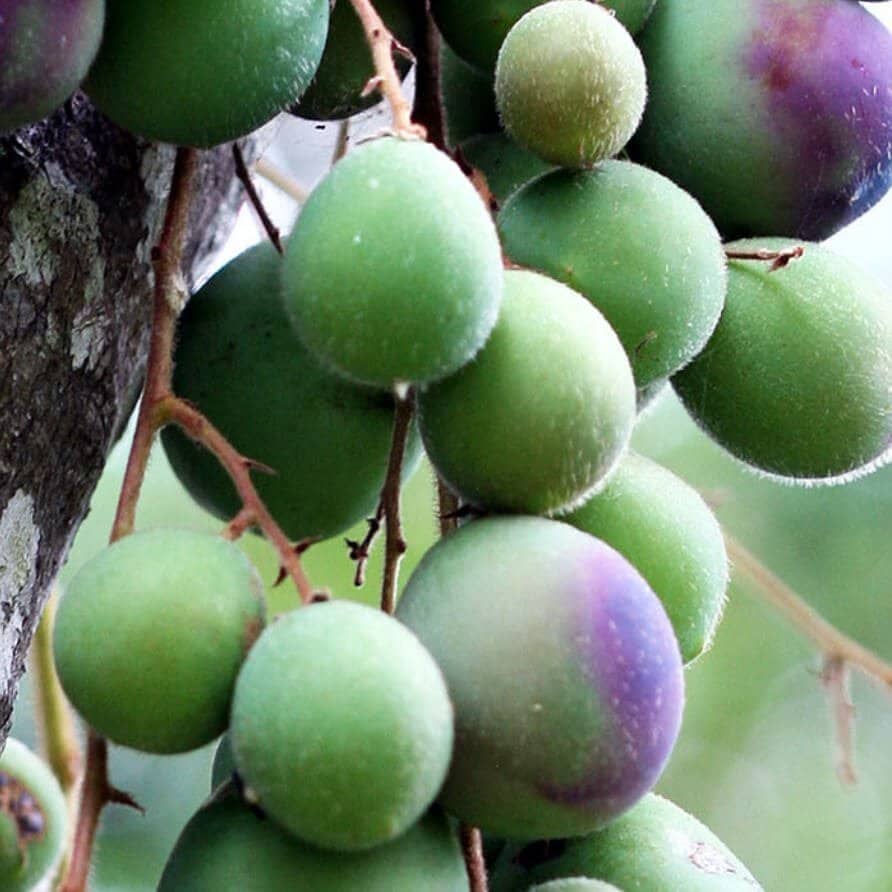Winter Market Report
15/07/2020Winter market report: What’s in season?
Australia is a wild place; vast red deserts, dense rainforests, craggy mountain ranges. The ever-changing landscape, going through a cycle of scorching sun, drought, monsoonal rains and flood, explains why this country is able to offer up such a versatile range of native ingredients, and how this produce has sustained Indigenous Australians for centuries.
In recent years, with the effects of climate change, the seasons are shifting. We’re experiencing shorter winters, spring is arriving earlier, and the summers are longer and hotter. It’s changing the way things grow, with new plant growth coming in too early, making them susceptible to frost damage. Despite this, so far this year we’ve had a great haul of native ingredients. Here are a few of our favourites that are really flourishing in the winter months.
Davidson plum
This small, dark plum has long been a food source for Indigenous Australians. Found in tropical and subtropical rainforests along Australia’s east coast, the Davidson plum is a favourite here at the Australian Superfood Co. With a tart, acidic taste, a little like rhubarb, we love it with homemade jams and desserts, or stirring it through yoghurt for breakfast.
Lemon myrtle
Lemon myrtle is a beautiful native shrub, endemic to the Queensland coast; in summer, it blooms with creamy white flowers (which are a hit with butterflies and bees!). The leaves release a strong lemon scent when crushed, making it a zesty addition to hot teas, or some added zing to an evening cocktail. It has an intense citrus flavour, so it’s wonderful with tropical fruits, or used on roasted root veggies.
Aniseed myrtle
Aniseed isn’t for everyone, but if you love liquorice and fennel, you’ll adore aniseed myrtle. Traditionally used to treat hiccups and stomach aches, it’s a great digestive aid – we love a few drops of aniseed myrtle extract in a mug of hot water after a big meal. Its astringent flavour also makes it great with meats and in salad dressings.
Mountain pepper leaf and mountain pepperberry
Many refer to mountain pepper as the ultimate Indigenous superfood – and it’s hard to disagree. The spicy, sharp pepper is rich in antioxidants (more than blueberries, in fact) as well as Vitamin E, zinc, calcium and iron. While Indigenous Australians used both the berries and the leaves to flavour food, they also used it to treat stomach aches, skin conditions and tooth ache.
Round leaf mint
This pretty little mint, which explodes in bright purple flowers in spring and summer, was traditionally used medicinally to treat colds and headaches. These days, it’s used more commonly in cooking, often as a replacement for common oregano. Round leaf mint isn’t as sweet as oregano and mint; it’s got an aromatic citrus tang and earthy tones – but it’s still the perfect accompaniment to a Sunday roast!
Peppermint gum
Another favourite around The Australian Superfood Co office! This native Australian eucalypt, which grows in the south-eastern corner of the country, grows to about thirty metres in height and has peppermint-scented leaves. Indigenous Australians would mix the leaves with water to use as a stomach-calming tonic, but we love it in soups, marinades and syrups. Peppermint gum has a strong flavour, so add small quantities to your dishes!
Bush tomato
Native to central Australia’s arid desert regions, the bush tomato – or akudjura – grows after the summer rains. Around 80% of harvesting is done by hand, with the small sun-dried fruits plucked directly from the bush between autumn and winter. With a spicy caramel flavour, bush tomatoes are great in pasta sauces, chutneys, or in a Bloody Mary.
News, Market Report










